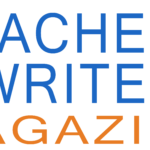In this lesson on developing supporting evidence, Fulbright Fellow and long time Teachers & Writers Collaborative teaching artist Sarah Dohrmann attempts to generate student interest by appealing to these young writers’ favorite topic: themselves. In “This I Believe,” high schoolers are asked to take a scene from their lives and turn it into powerful supporting evidence of personal belief—and in doing so learn the basic building blocks of the argumentative essay.
Lesson Overview
Genre(s) taught: Argumentative Writing, Poetry, Personal Essay Writing
Grade(s) taught: 9th & 10th Grades.
Workshop Objective:
For students to write a scene from their lives that will later serve as the “supporting evidence” of something they believe in; then they’ll write one sentence that simply states the belief that their scene exemplifies—and ultimately a personal essay based on it.
Common Core State Standards:
(Refer to the Anchor Standards for Writing at www.corestandards.org/ELA-Literacy/CCRA/W)
- CCSS.ELA-LITERACY.W.9-10.3
Write narratives to develop real or imagined experiences or events using effective technique, well-chosen details, and well-structured event sequences. - CCSS.ELA-LITERACY.W.9-10.3.A
Engage and orient the reader by setting out a problem, situation, or observation, establishing one or multiple point(s) of view, and introducing a narrator and/or characters; create a smooth progression of experiences or events. - CCSS.ELA-LITERACY.W.9-10.4
Produce clear and coherent writing in which the development, organization, and style are appropriate to task, purpose, and audience. (Grade-specific expectations for writing types are defined in standards 1-3.)
Guiding Questions:
“When you write an essay like this, you look in the mirror and see who you are and what makes up your character.” —Howard White in his This I Believe essay, “The Power of Hello.”
This is not so much a guiding question as it is a guidepost. How can you write from your higher self and not your lower self? When you write an essay about what you believe, you need to tap into the part of you that makes you “you,” not the reactionary or miserly you. So I suppose the guiding question would be: What is your personal philosophy?

LESSON
Ritual (5 min):
We begin each class with this call and response:
Me: Repeat after me: ‘I have a voice!’
Students: I have a voice!
Me: My voice is powerful!
Students: My voice is powerful!
Me: My voice can change the world!
Students: My voice can change the world!
Introduction/warm-up activity (5-10 min):
First, review the 5 W’s and the H that are required for every scene: Who What When Where Why & How.
Then distribute a copy of Howard White’s essay for thisibelieve.org, “The Power of Hello.” Tell students you’ll want to discuss three questions after they’ve listened to a recording of Howard White read his essay. Display the three questions on the board:
- What is Howard White’s personal philosophy? What does he believe?
- What happened in his life that caused him to have this belief?
- How does his belief influence him now? Or: How does he use this belief now?
Play the recording of Howard White reading his essay while students follow along.
Main activity (20-25 mins):
- Distribute “Beauty Is More than just Skin and Eyes,” another This I Believe essay written by a teen writer named Emily. Ask both a female and a male student to read it aloud. (I don’t know why I do this, only that I think it’s important for a male student to enter into this voice.)
- Discuss the three questions in relation to Emily’s essay.
- Ask students to get out a fresh piece of paper and something to write with, and to clear the space in front of them of book-bags, books, or other clutter.
- Turn down lights.
- Ask students to shut their eyes and place their hands palm-down on their laps or on the surface of their desks.
- Ask students to recall an event in their life that stands out to them—it could be small or big, doesn’t matter. The event just must be something that their mind goes back to often. Remember exactly what happened. Who was there? What was the weather like? When did this take place? How old were they? What time of day was it? Did anyone say anything? What did they say, exactly? What feelings were going through their body at the time—were they sweating? Shivering? Etc. etc.: basically trying to get students to “see” the scene as it was at the time. (And helping them develop their 5 W’s and their H.)
- Ask students to open their eyes and begin recording this event without speaking. I did timed writing exercises so that students didn’t feel like this went on too long. I would extend the timed exercises a lot, too, because as the residency went on, many students needed more time to write.
- What simple believe is being described here? Have students write this belief in no more than one sentence at the top or bottom of their page (i.e., “I believe in not giving up on people you love, no matter how hard it is,” or “I believe that hard work pays off”).
- Note that their scene is essentially pathos for a strong essay on their personal belief.
Closing (5 mins):
With limited share time, ask each student to read aloud their one belief sentence (this is a really powerful reading, especially if done without calling on people, but having them just simply state their belief as they go around).
Materials:
Copies of both “The Power of Hello,” and “Beauty Is More than just Skin and Eyes”, available here and here, respectively.
Vocabulary:
pathos, first person narrative, empathy, autobiography
Multi-modal approaches:
Spatial, through visualizing with the mind’s eye
intrapersonal, through the opportunity for self reflection
linguistic, through the use of words and reading aloud
Sarah Dohrmann is a Brooklyn-based writer of literary nonfiction whose work has appeared in Harper’s Magazine, Tin House Magazine, The Iowa Review, and New York, among others. She began teaching in the schools with T&W in 2001 and currently teaches at New York University; she also independently leads a personal nonfiction writing workshop called Diving Into the Wreck. After earning her MSW in June 2023, Sarah serves as a clinical social worker in the Domestic Violence Aftercare Program at University Settlement in New York City's Lower East Side.



